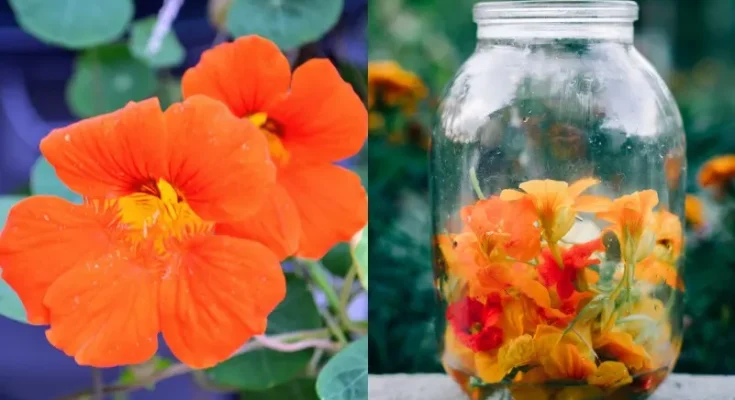Nasturtiums are an extremely useful and attractive flowering plant that deserve a space in every garden.
This is the common name for Tropaeolum – the only genus in the plant family Tropaeolaceae.
These flowers gained their common name because of their similarity to watercress (Nasturtium officinale).
As you will learn in this article, there are plenty of reasons to grow nasturtiums in your garden – they are incredibly useful in the garden itself, and also when harvested for culinary use.
Read on to learn more.
How To Grow Nasturtiums
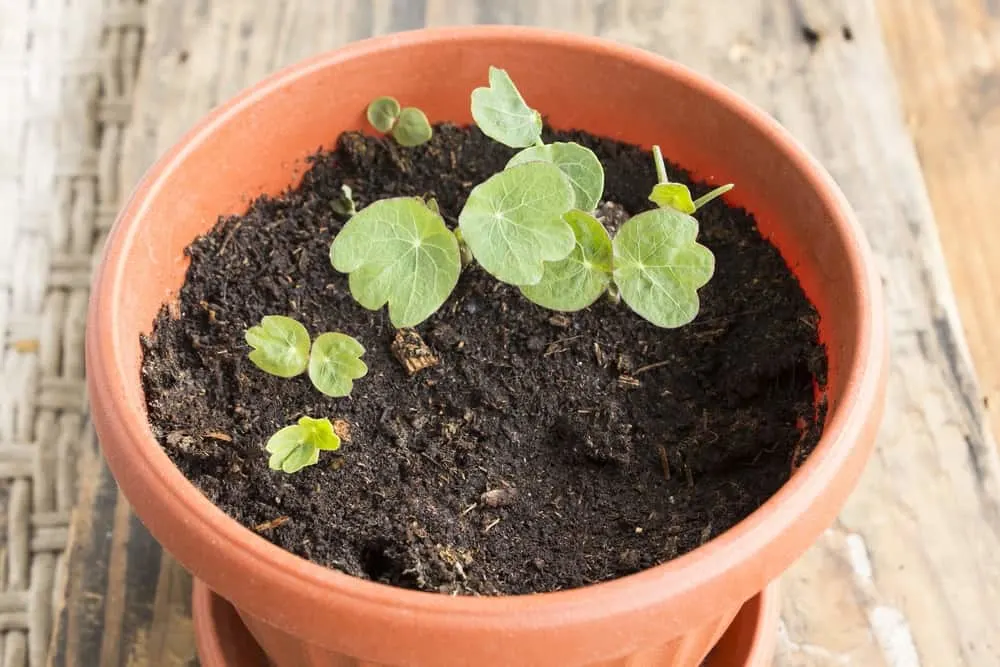
Nasturtiums can be sown inside in pots or outside where they are to grow between March and May. They will flower from summer through to the autumn.
Nasturtiums are very easy to grow from seed and are hassle free, especially if you are not in a rush and just direct sow as soon as the risk of frost has passed in your area.
If you want to get earlier blooms then you can start the seeds indoors, though to prevent transplant shock it is best to grow them in biodegradable containers (toilet roll tubes work well) so you can just pop the whole thing into the garden.
The large seeds are easy to handle and so are the perfect way to introduce children to gardening.
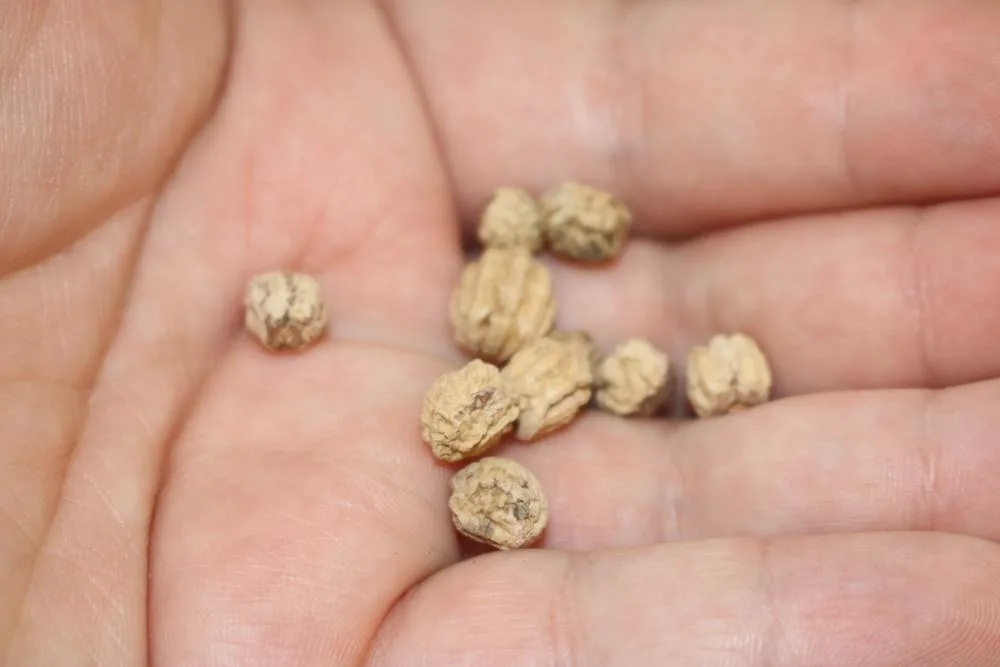
Nasturtium seeds will germinate in a sunny spot in 10-12 days. Remember to harden off plants grown inside before planting them out.
Where to Place Nasturtiums
Nasturtiums will prefer a sunny and relatively sheltered spot.
Nasturtiums will thrive even in relatively poor quality soil as long as they are watered regularly. Try to keep the area around them free of weeds to reduce competition, and do not over-fertilize as fertile soil can cause plants to produce fewer blooms and more foliage.
Caring for Nasturtiums
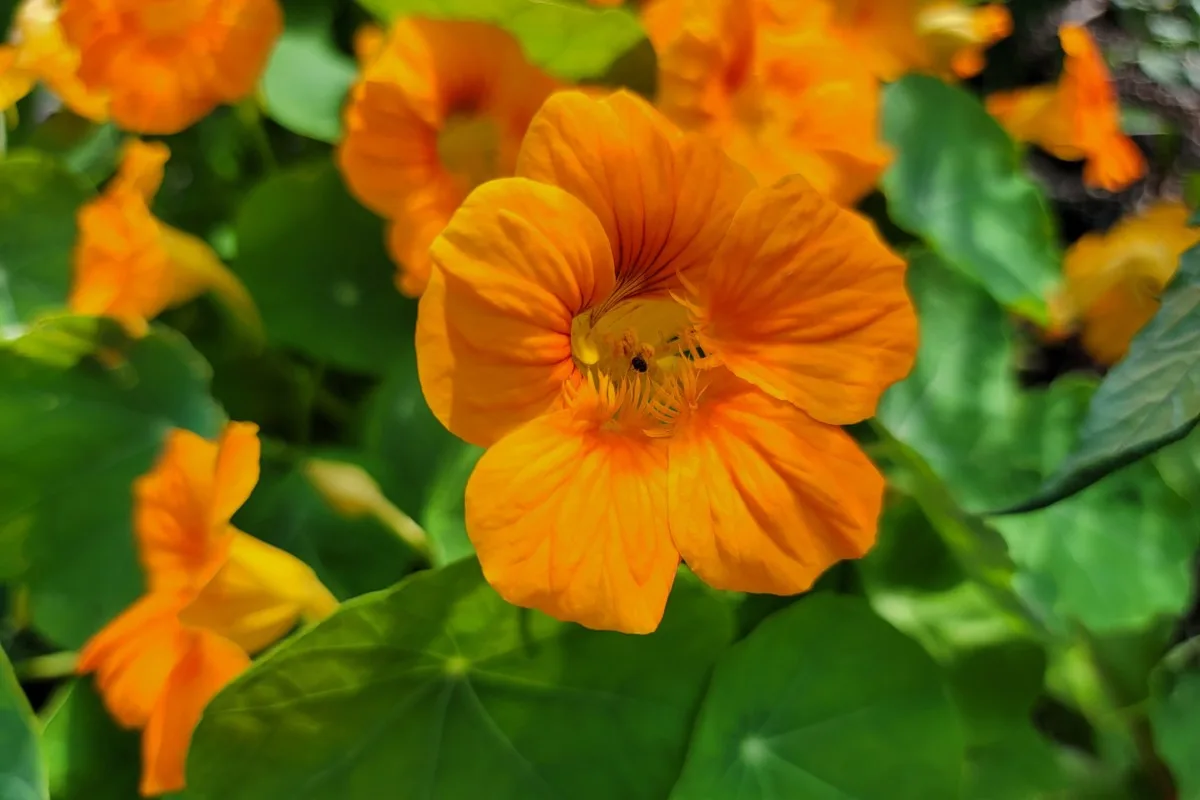
These plants are fairly hardy but make sure that you water them well during dry weather. Pay attention to watering, especially with plants in pots or window boxes, which can dry out more quickly. Let the soil dry between waterings but not too much or for too long.
Cutting off finished or faded flowers will encourage the plant to keep blooming for longer throughout the growing season. As you will learn later, however, you may wish to harvest the flowers (and leaves) for a range of culinary uses rather than allowing them to fade.
5 Reasons To Grow Nasturtiums in Your Garden
Nasturtiums are an attractive plant that can bloom abundantly. They can bring colour and visual appeal to your garden. But there are also a number of very practical reasons why growing these flowers is a good idea.
You can, for example, use nasturtiums to:
1. Attract Beneficial Insects
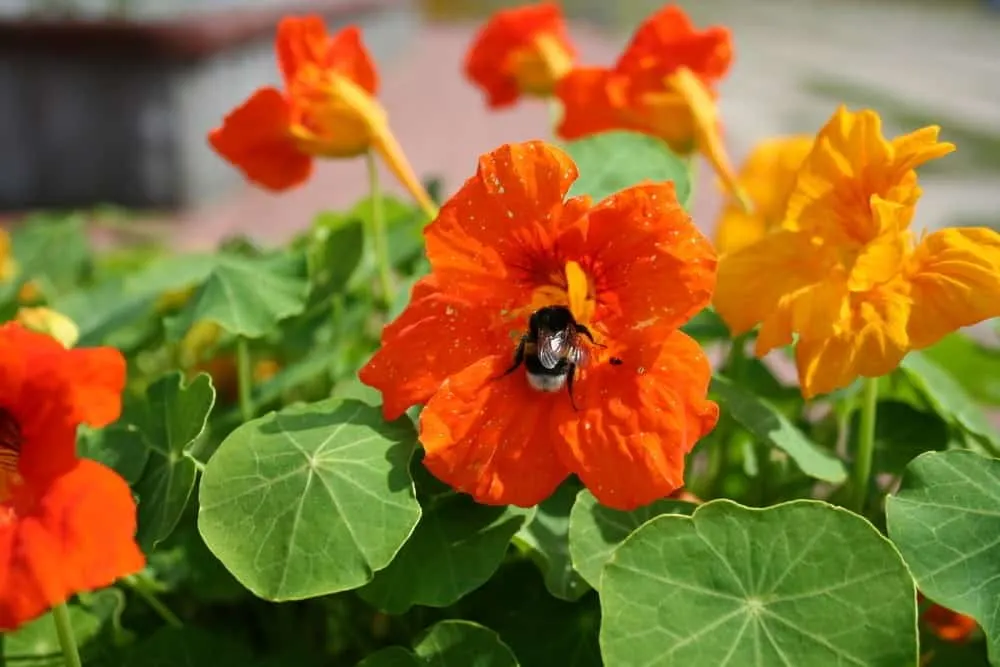
Nasturtiums will attract a range of beneficial insects to your garden – including bees and other pollinators.
Adding nasturtiums in your outside space is one way to help honey bees and other bee species that are under threat due to climate change and human activity.
We need bees for our very survival on this planet. So it is vitally important that as gardeners and growers, we all do our part to protect and aid them. Of course, having pollinators in your garden will also help make sure you get a great fruit harvest each year, if you grow your own food.
2. As A Companion Plant For Your Fruits & Veggies
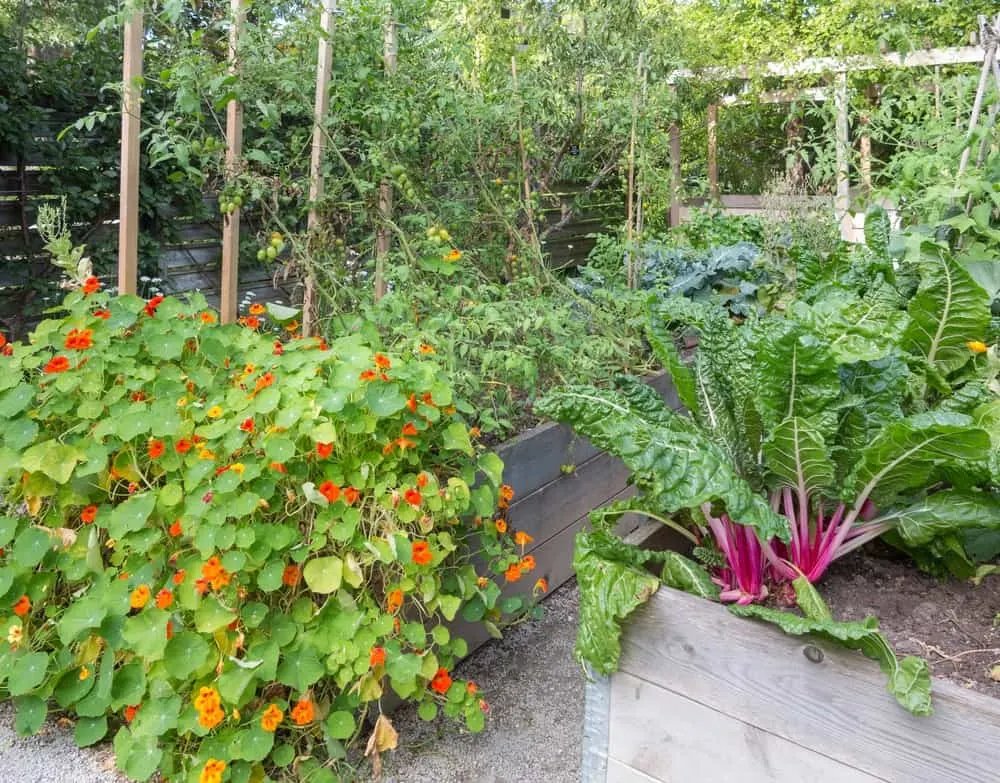
It is not only pollinators that will be attracted to nasturtiums. These plants also attract pest insect species such as aphids, weevils and beetles making the nasturtiums a brilliant companion plant in the vegetable garden.
This might not immediately seem like a good thing – but since these pests are attracted to the nasturtiums, they will leave your fruits, vegetables or other crops alone. Nasturtiums, therefore, are known as a trap crop.
As a trap crop, they are an excellent choice for keeping pests away from beans, tomatoes, fruiting trees and brassicas (plants in the cabbage family).
You can learn all about trap crops and how to use them in your garden here.
How to Utilize Trap Crops To Save Your Garden From Pests
Another thing to bear in mind is that by attracting their prey, and in other ways, nasturtiums are also excellent at attracting predatory insects, which will help to keep pest populations in check.
Nasturtiums act as a brilliant companion plant for squash, cucumbers and other cucurbits because their smell repels or confuses many of the common pests by which these plants are bothered.
3. For Ground Cover
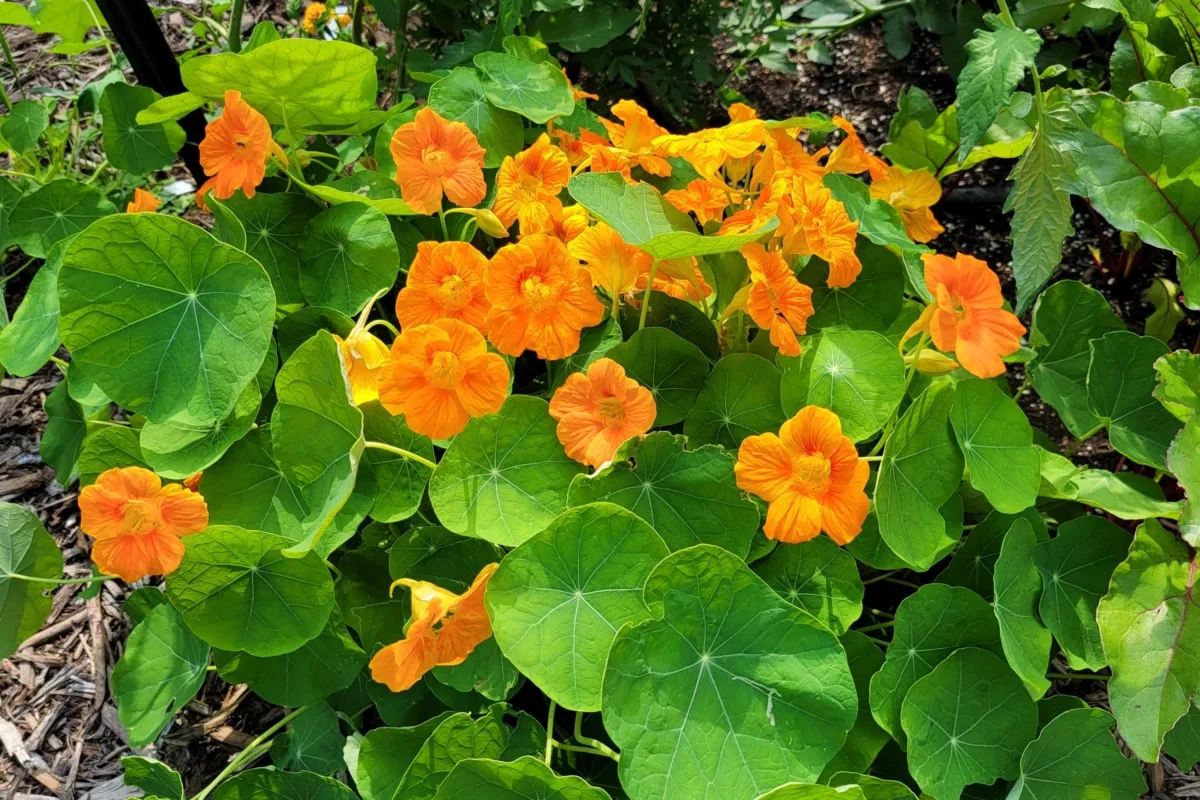
Companion planting is not an exact science, and the many ways in which plants interact with one another and with garden wildlife is not entirely understood. Nonetheless, it is clear that nasturtiums can help other plants through their interactions with various insect species.
But this is not the only way in which nasturtiums can help nearby plants.
These drought-tolerant plants can also be excellent ground cover. This can be extremely beneficial – especially in drier, warmer areas, as it will reduce moisture evaporation and help to protect the fragile soil ecosystem. Their thick coverage and quick spread can also help crowd out weeds.
As ground cover, nasturtiums can also be used to feed poor soil over time. When used as a sort of green manure, these plants can improve the soil in a given area by adding nutrients when left to decompose in place at the end of the growing season, or chopped and dropped.
4. To Cover Unsightly Walls or Fences
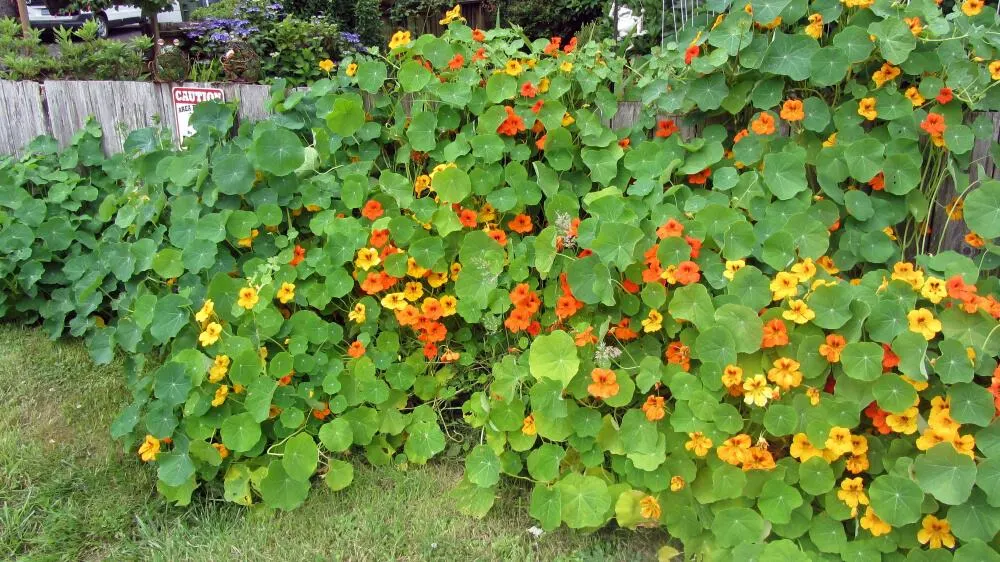
The quick growing nasturtium can also be handy to improve the visual appeal of your garden, as it can be used to trail down unsightly walls or fences.
This can turn an unattractive and useless part of your space into a beautiful and bountiful part of the garden.
5. For Their Yield
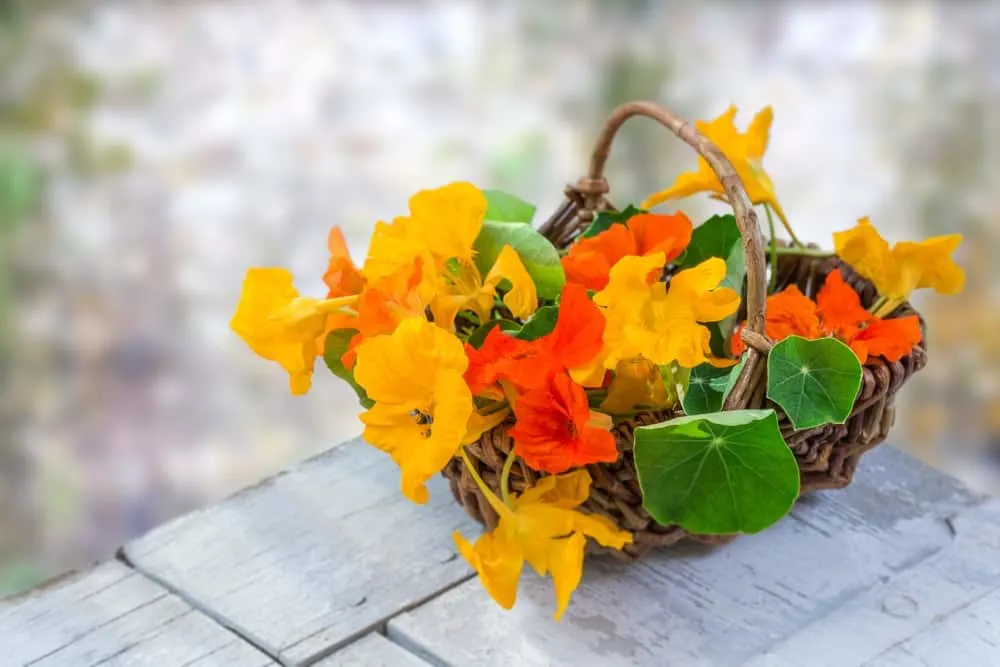
Many people are surprised to learn that nasturtiums are edible.
These plants not only aid other plants in your kitchen garden, they can also be an incredibly useful edible crop in their own right.
As an edible crop, these plants can really justify their place in your kitchen garden.
The flowers, leaves and flower buds can all be used in a wide range of recipes. Some of the best examples are given below:
10 Edible Recipes Using Nasturtium Leaves, Flowers & Seeds
These are just some of the best ways to use nasturtiums in your kitchen:
1. Nasturtium Salads
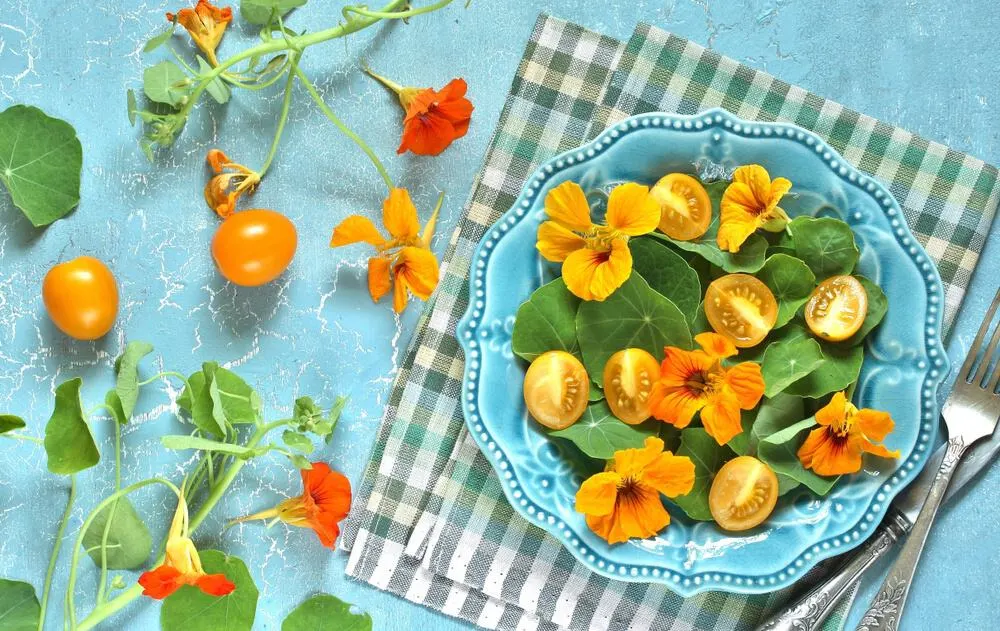
One of the easiest and most obvious ways to eat nasturtium flowers and leaves, which have a peppery, watercress-like taste, is in salads.
Their peppery bite is perfect when paired with milder lettuce or other leaves, and you can even enliven your salad with a nasturtium vinaigrette. (This can be made, if you wish, with a nasturtium vinegar – like the one described below.)
Nasturtium Salad with Nasturtium Vinaigrette @ KitchenLane.com
2. Nasturtium & Black Pepper Vinegar
Both the flowers and leaves can also used to infuse vinegar.
This example uses white wine vinegar as the base, though you could also consider using a home-made apple cider vinegar for this purpose.
This vinegar can be added to a range of cooked dishes for peppery tang, or used to make a vinaigrette to grace a wide range of home-grown salads.
Peppery Nasturtium Vinegar @ EdibleCommunities.com
3. Nasturtium Stir Fry
Nasturtium leaves also lend themselves well to a range of stir fry recipes – so you can use them to whip up an impressive meal in next to no time.
Slightly wilted, the leaves lose a little of their fiery watercress flavour, and become a far more versatile and nicely flavoured green leaf vegetable.
4. Nasturtium Pesto
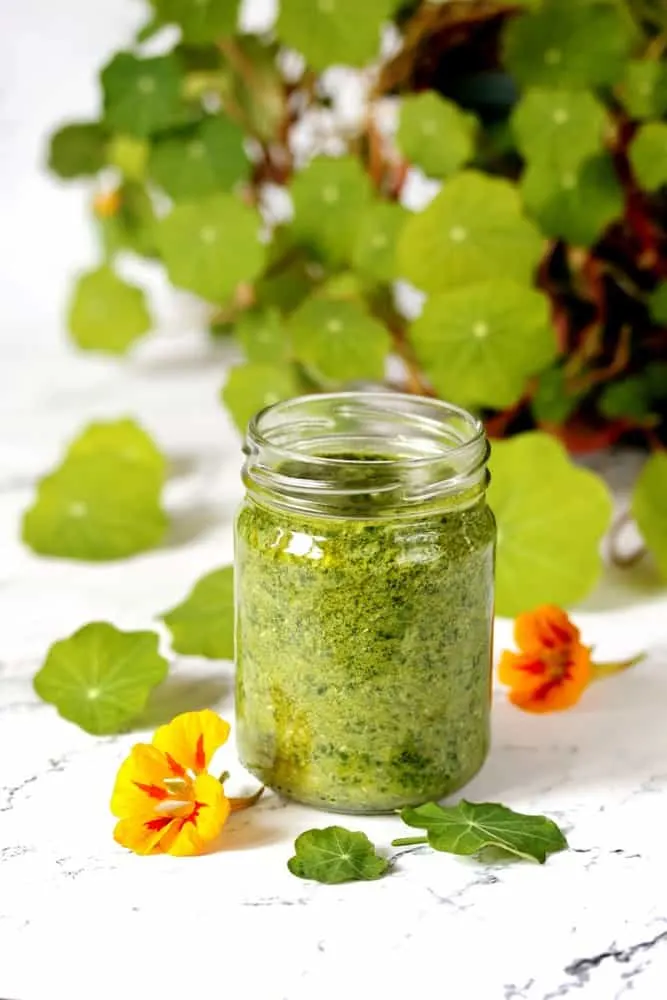
Leaves can also be used in the same way as basil and other popular herbs to make a somewhat less-traditional pesto.
You can use your pesto in sandwiches, pasta, or to add flavour to a wide range of other dishes.
Nasturtium Pesto @ GardenBetty.com
5. Nasturtium Soup
There are also plenty of soup recipes that include nasturtium.
The leaves, blended with other ingredients, can be used for their watercress pepperiness as the star of the show, or simply added to a mixed vegetable soup as a pot herb or additional leafy green. One great soup recipe can be found below.
Nasturtium Soup @ LarderLove.com
6. Nasturtium Omelette
Another idea is to add those leaves and flowers to an omelette – or, by extension, to any other egg-based dish, such as a quiche or a frittata.
An example of a delicious omelette can be found here:
Herbed Omelette with Griddled Zucchini, Halloumi & Nasturtiums @ TheSeasonalTable.co.uk
7. Nasturtium Fritters
Like so much other home-grown garden produce, nasturtiums can also be turned into delicious fritters.
Nasturtium Chickpea Batter Fritters @ Victory Gardens For Bees
8. Nasturtium Dolmades
The leaves can grow rather large later in the growing season. These can be used in the same way that you might use vine leaves or cabbage leaves – to wrap other ingredients – as in these dolmades.
Stuffed Nasturtium Leaves @ Attainable Sustainable
9. Nasturtium Pizza
Or, for a super easy family meal, you could consider simply adding some to the top of a pizza.
Nasturtium White Pizza @ Healthfully Ever After
10. Caper Substitute
Nasturtium seed pods can also be used as a caper substitute.
Nasturtium Capers @ SplendidTable.org
Make Room For Nasturtiums
Whether you grow nasturtiums for their visual beauty or benefits for your garden, or if you plan to turn your nasturtiums into one of the above delicious recipes, there’s no doubt you should make room for this versatile flower in your garden.
